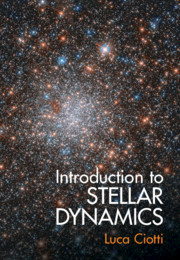7 - Relaxation 1: Two-Body Relaxation
from Part II - Systems of Particles
Published online by Cambridge University Press: 28 May 2021
Summary
In this chapter, we introduce one of the fundamental and most far-reaching concepts of stellar dynamics (and of plasma physics for the case of electric forces): that of “gravitational collisions." As an application of the framework developed, the two-body relaxation time is derived (in the Chandrasekhar approach) by using the so-called impulsive approximation. The concepts of the Coulomb logarithm and of infrared and ultraviolet divergence are elucidated, with an emphasis on the importance of the correct treatment of angular momentum for collisions with small impact parameters, an aspect that is sometimes puzzling for students due to presentations in which the minimum impact parameter appears as something to be put into the theory “by hand." On the basis of the quantitative tools devised in this chapter, we will show that large stellar systems, such as elliptical galaxies, should be considered primarily as collisionless, while smaller systems, such as small globular clusters and open clusters, exhibit collisional behavior. These different regimes are rich in astrophysical consequences, both from the observational and the theoretical points of view.
- Type
- Chapter
- Information
- Introduction to Stellar Dynamics , pp. 124 - 136Publisher: Cambridge University PressPrint publication year: 2021



